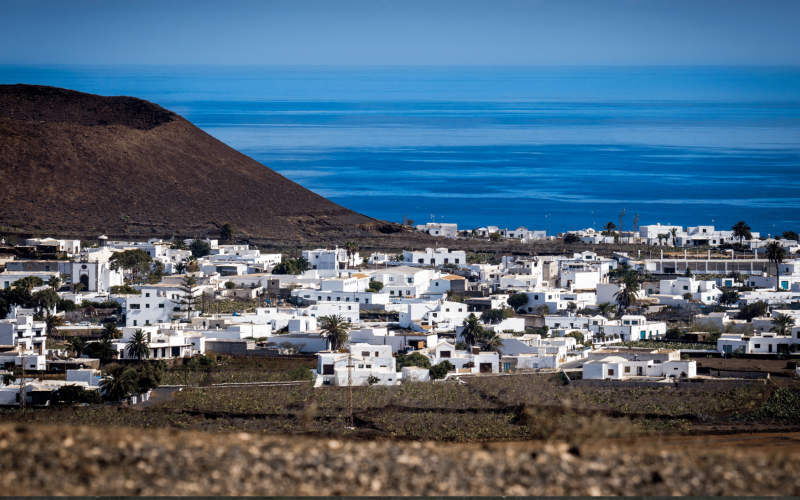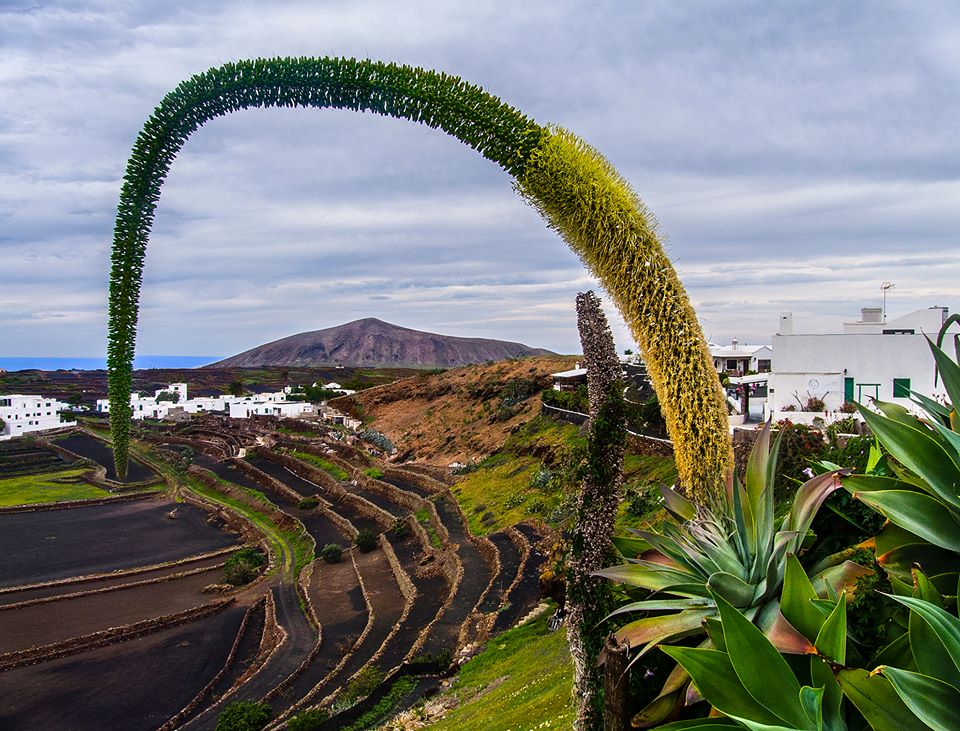Guiguan Viewpoint
Guiguan Viewpoint
The fact that agriculture exists in Tinajo and Lanzarote is due fundamentally to the ingenuity, willpower and perseverance of the farmers themselves who for centuries have been forced to work the land without faltering and to overcome the continuous tests to which nature has subjected them; not only in the meteorological order (scarce rain and strong sunlight) but also to skillfully overcome the conditions of the environment. The entire area covered by this municipality is a clear example of this (artificial and natural sandbanks, terraces, gavias, jable etc.) so we can assure that the farmer has been and is the true sculptor of the landscape of Tinajo. Thus, the agricultural terraces of the Caldera de Guiguán are the testimony of a complex work in which they managed to overcome more or less steep slopes. They were built by modifying the slope of the Caldera, to obtain horizontal, relatively wide spaces and use them for cultivation. These terraces do not have a defined pattern in terms of their vertical arrangement, they have various dimensions and a disorganized shape according to the topography of the terrain. Between steps the difference in level can reach one meter or more. They are made up of dry stone walls with an accumulation of earth inside. The last layer corresponds to the lapilli or volcanic ash, commonly called "rofe" which has the particularity of conserving the humidity that the sea winds and the dew deposit on the ground, making the land much more productive and fertile. With the construction of these structures they managed to counteract the erosion of the caldera as well as protect the crops from the persistent trade winds. In these agricultural plots, various fruits are obtained from the land: corn (millo) from which the precious gofio is obtained, onions, potatoes, pumpkins, vegetables, grapes, etc.


